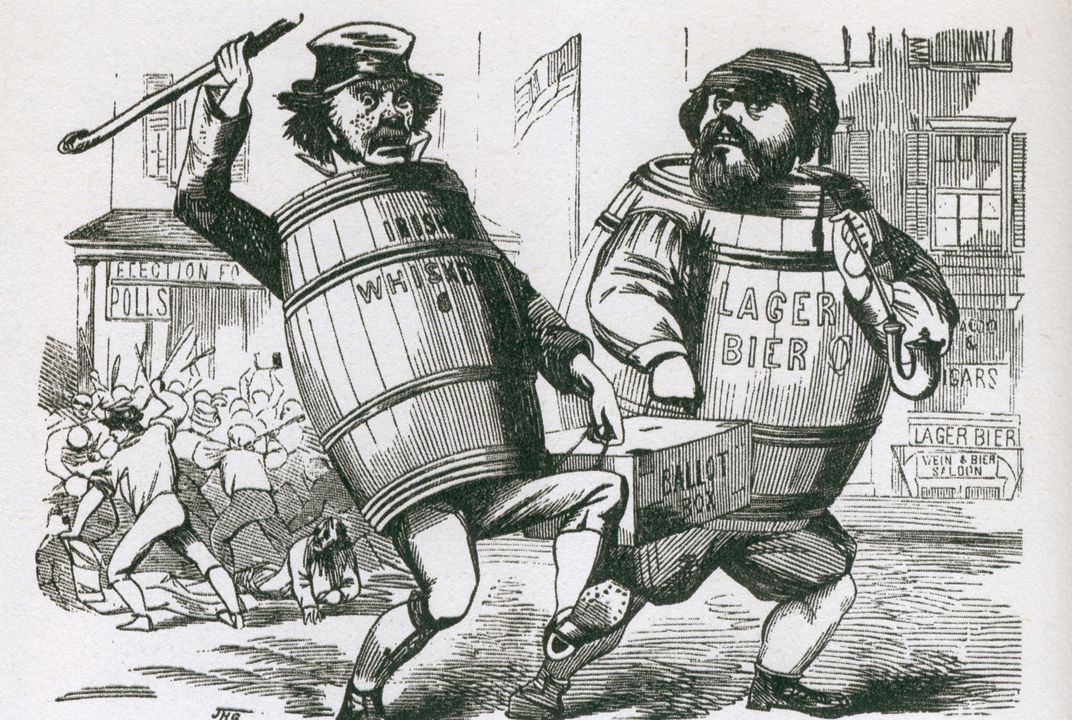
A Know-Nothing political cartoon denigrating Irish and German immigrants. (Time Magazine, How the Republican Party's Founders Defeated Xenophobia, last modified April 6, 2016, accessed December 8, 2020, https://time.com/4280458/republican-party-know-nothings/.)
2020 is a year marked by national division, political polarization, and damaging rhetoric. To us, one of the most dangerous trends of 2020 and the years leading up to it is the rise of nativism, or "a deep-seated American antipathy towards internal 'foreign' groups of various kinds—cultural, national, religious, racial—which has erupted periodically into intensive efforts to safeguard America from such perceived 'threats'" [1]. To offer one perspective on this issue, we explored the rhetoric of nativism, specifically the threads of nineteenth-century nativism in contemporary political discourse. To do so, we examined the roots of modern nativism by creating a database of speeches and writings from nineteenth-century thinkers and political figures. We particularly focused on three major nativist movements: the Know-Nothing Party of the 1840s and 1850s, the rise of the Ku Klux Klan in the latter half of the century, and the Chinese exclusion movement in the final few decades of the 1800s. We then trained a neural network on this database to see whether it could learn to recognize nativist rhetoric, and test whether the model would pick up more modern (20th - 21st century) nativism. We applied the model to speeches from U.S. presidents from Jimmy Carter to Donald Trump, finding that our model could in fact detect nativist remarks in these speeches with some degree of accuracy. We are then able to use the model as a tool to better understand how those speeches approach immigration, or (in the future) quickly locate nativist passages in large datasets.
We recommend exploring the website by going from left to right on the tabs at the top. Begin by perusing the "Background" tab for a brief primer on the history of nativist rhetoric in the United States with a focus on the periods that our project analyzes. From there, see the "Database" tab for information on our research and the database we used to train our machine learning model. Finally, conclude on the "Machine Learning" tab, which includes a few tidbits about the machine learning model before presenting our findings with applying the model to modern-day U.S. presidential rhetoric.
[1] Ira M. Leonard and Robert D. Parmet, American Nativism, 1830-1860 (Huntington, NY: R.E. Krieger Pub., 1979), 6.